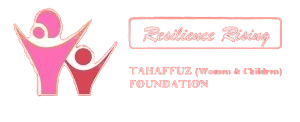
• Aser reaches out to over 48,000 students, aged three to 16 years, in both rural and urban areas
• Students were assessed using grade two learning tools
• Enrolment increases to 86pc in 2023 from 76pc in 2021
• Number of rural students enrolled in private schools doubled
KARACHI: Providing valuable insights into education of students aged between five and 16 years in Sindh, an annual report raises concern over a persistent dip in children’s ‘learning levels’ despite a ‘remarkable’ increase in enrolment rates in 2023.
At the launch of the Annual Status of Education Report (Aser) here on Wednesday, the participants were informed that learning losses remained persistent from Covid-19 and the 2022 floods as learning levels remained very low and declining over the years when compared with the year 2019.
Education Minister Syed Sardar Shah was the chief guest at the launch of the report that mainly focuses on measuring foundational literacy and numeracy (which are basic skills in reading, writing, and mathematics) in the province.
The report also includes important themes to highlight access to technology, wealth inequality, gender and impact of climate change.
Aser Pakistan, a flagship programme of Idara-i-Taleem-o-Aagahi (ITA), aims to provide reliable estimates on children’s learning status, aligning with education targets or Sustainable Development Goal (SDG) 4.1.1.a. and Article 25A (Right to Education) of the Constitution of Pakistan.
ITA chairman Kazim Saeed welcomed the guests and provided an overview of the key aspects of Aser 2023.
In Sindh, Aser Pakistan 2023 reached 48,097 children aged three-16 years, out of whom 20,858 were girls. Approximately 37,788 children aged five-16 were assessed using foundational learning or grade two-level learning tools in Urdu, arithmetic, and English.
The assessment covered 1,002 villages/blocks in 25 rural and 30 urban districts, encompassing 811 schools in rural areas and 20,395 households in both rural and urban.
One of the key highlights of the Aser 2023 report in Sindh is the remarkable increase in enrolment rates both for early childhood education (ECE) and 6-16-year-olds, signalling a positive trend in demand for education.
The report indicates that Sindh boasts an 86pc enrolment rate for 6-16-year-olds, demonstrating a significant improvement from 76pc in 2021.
This surge in enrolment reflects concerted efforts by the government/ school education and literacy department (SELD), the Sindh Education Foundation and private partners to enhance access to education for children across the province.
The urban enrolment rate was 95pc while 39pc children were enrolled in ECE or early years.
The report indicates a shift towards private schooling in rural areas from six per cent in 2021 to 12pc in 2023, government schools continue to play a pivotal role in accommodating the majority (88pc) of six-16-year-olds for the year 2023.
This analysis sheds light on the dynamics of educational preferences and choices among parents in Sindh, highlighting the need for targeted interventions to ensure equitable access to quality education across both public and private sectors.
The poorest and poor continue to highlight gender gaps not just between richest and poorest but also within poorest quartiles with a 10pc difference; girls lag behind boys in enrolment.
Aser 2023 revealed a dip in the learning levels in the rural Sindh with Sindhi/Urdu Story reading slipping from 40pc in 2021 to 39pc in 2023 of 5th graders. A similar trend could be seen in English sentence reading 22pc (23pc in 2021) of children can read a set of sentences fluently in English, and 27pc (28pc in 2021) can solve two-digit arithmetic divisions. Learning losses persist from Covid-19 and the floods 2022 — this dip in the learning levels is concerning as learning levels remain very low and declining over the years when compared with the year 2019.
One of the stark contrasts that could be seen is at the grade three-level learning outcomes. ASER 2023 shows that only eight per cent of children can read an Urdu story, five per cent can read a set of English sentences fluently and only a meagre three per cent can do a two-digit division that is aligned with grade 2 curriculum.
This foundational crisis once not attended to in grades two/three persists in the later grades and evidence of the poor learning outcomes at higher grades. Moreover, boys continue to outperform girls in all three competencies in rural areas; however, in urban areas, girls are performing as well as boys.
Encouragingly, the percentage of out-of-school children has notably decreased in Sindh, reflecting enhanced access to education opportunities for both males and females.
Gender gaps persist, but more girls and boys are going to school as compared to 2021 (National & Sindh). The gender gap is narrowing nationally and in Sindh too since floods in 2022. Compared to 2021, the current report indicates a notable decrease in the number of children who are out of school. The teacher attendance rate is 89pc in rural areas whilst students’ presence is 75pc in government schools an increase over 2021.
Access to technology emerges as an important theme in the ASER 2023 report, with insights into household technology usage and connectivity; this can be leveraged for learning solutions. The report highlights technology access in household connectivity. 74pc of households reported possessing a mobile phone (Urban 88pc), 37pc had a smartphone at home (Urban), 13pc had access to internet connectivity (Urban), underscoring the transformative potential of technology in education.
Furthermore, ASER’s unique focus on climate change sheds light on the impact of environmental factors on education, highlighting the need for climate-resilient education strategies and awareness initiatives. The report finds that only 18pc of households reported being “aware” about climate change. Around 28pc of households reported that their psychological well-being was “substantially affected” due to natural disasters.
Infrastructure
The report provides valuable insights into the state of infrastructure and resources in schools across Sindh.
While there are improvements in teacher attendance, basic facilities at the primary level for government schools have declined due to floods.
After the floods, there has been a notable decline in basic school facilities such as boundary walls, clean drinking water, electricity connection, and sanitation in government schools. However, the situation in private schools has seen improvement. Despite this, government schools received more support in the form of donations.
Sindh reported having three per cent of children in government schools and six per cent of children in private schools with any functional disability.
This year ASER emphasises on inclusivity and calls for actions from the state and other stakeholders to provide accessible learning opportunities and facilities in schools for children with functional disabilities which are often ignored by parents and teachers.
ASER underscores the importance of healthcare access and vaccination coverage in promoting child well-being and educational attainment.
The report indicates that 63pc of assessed children in Sindh have received all basic vaccinations with proper documentation (37pc reported having none).
In conclusion, the ASER provincial report launch in Sindh serves as a clarion call for policymakers, educators, and stakeholders to redouble their efforts in advancing inclusive and quality education.
Despite a 10pc improvement in enrolment levels in 2023 (from 76pc in 2021 to 86pc in 2023), Sindh still ranks lowest in foundational learning with majority schools at primary level being one-two teacher schools.
“By leveraging the insights from ASER, Sindh can chart a course towards equitable educational opportunities, sustainable development, and empowerment for all its citizens,” the report says.
By SHAZIA HASAN, Published in Dawn, March 28th, 2024 https://www.dawn.com/news/1824238


Leave a Reply